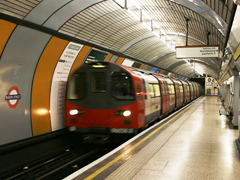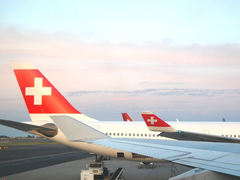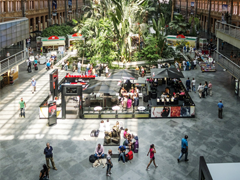 In the past few decades, terrorist tactics have changed. Whether or not you were aware, targets of terrorist organizations and lone wolf radicals have shifted.
In the past few decades, terrorist tactics have changed. Whether or not you were aware, targets of terrorist organizations and lone wolf radicals have shifted.
Previous attacks and attempts had been aimed at airlines carrying cargo and passengers. Lately though, targets have veered in a different direction – towards mass transit and critical infrastructure.
That’s not to say they’ve stopped targeting airlines altogether. We know terrorists are always looking for ways to exploit vulnerabilities.
Past Terrorist Tactics
 The downing of Swissair Flight 330 using a barometric triggered IED in the cargo compartment.
The downing of Swissair Flight 330 using a barometric triggered IED in the cargo compartment.
The use of PETN explosives to take down Pan Am Flight 103 over Lockerbie, Scotland.
The bombing of Avianca Flight 203 just minutes after departing Bogota, Colombia.
The nearly 3,000 lives lost from the September 11th attacks.
These are only a few examples of past acts of terrorism aimed at taking down cargo and passenger airplanes. These elaborately planned schemes were designed to create the biggest disruption and cause the most damage.
But lately there’s a growing risk to critical infrastructure and mass transit.
Present Terrorism Trends
 The numerous explosions at train stations during rush hour in Madrid, Spain.
The numerous explosions at train stations during rush hour in Madrid, Spain.
The London Underground and bus bombings in the United Kingdom.
The hundreds of lives lost during a military uprising all around Maiduguri, Nigeria.
The attack on children and staff at an army-run school in Peshawar, Pakistan.
From reading our blog post Keeping Up with the Latest Terror Threats and Attacks, you can see how frequent attacks to commonly visited places such as schools, cafés, markets, shopping centers, subway systems, etc have become.
The attacks still have the same effect whether aimed toward the sky or on the ground. They disrupt national security, safety, and stability - exactly what terrorists want to accomplish.
Security Efforts on a Higher Level
Critical infrastructure and mass transit systems have a certain responsibility to keep people safe. If security efforts exist, it tends to focus on perimeter security, secured entrances, surveillance systems, or basic screening depending on the industry they are in. But there’s only so much they can do.
That’s why nations all around the world have to continue strengthening their security efforts at a higher level. Analyzing behaviors and intercepting plots before they reach their intended target is crucial. Encouraging open lines of communication between countries and with critical infrastructure systems can benefit the security industry on a whole.
What do you think can be done to counter these rising attacks on critical infrastructure and mass transit? Let us know your thoughts below.